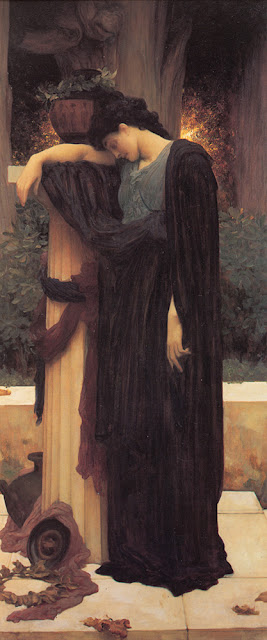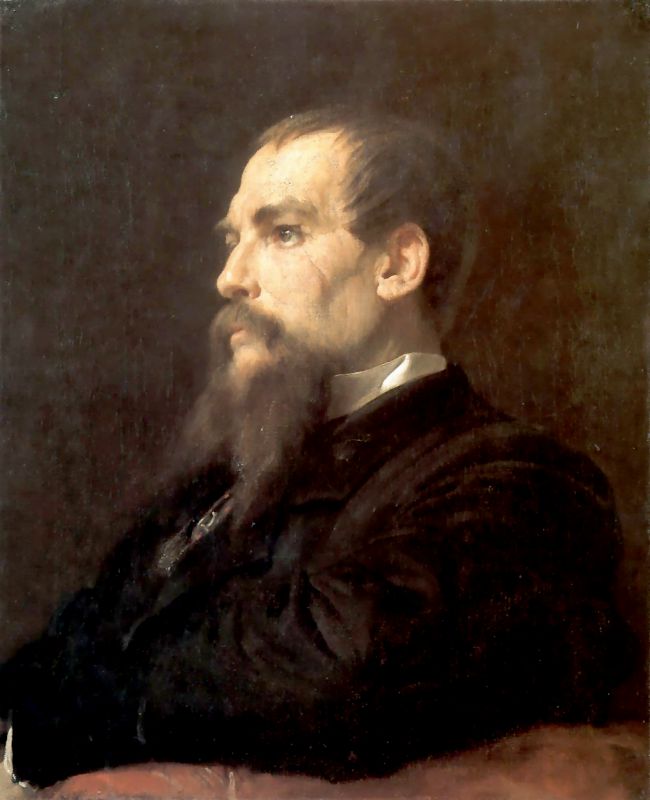Lord Frederick Leighton /born 1830- died 1896 /English
The leading establishment figure in Victorian art, was the first artist to be ennobled. He was President of the Royal Academy for almost two decades, and his presidency was a time of unrivaled prestige, and success. Leighton carried out his duties with panache, and scrupulous fairness. He was a classical painter producing highly finished pictures, and was also an excellent portraitist (see his portrait of Sir Richard Burton the explorer and orientalist). Leighton was a sophisticated, cosmopolitan figure, much of his early life having been spent in Germany and Italy. The Leighton family was financially independent, his grandfather having been Doctor to the Russian Royal Family. Leighton's father was also a Doctor, but retired in middle-life due to the onset of deafness. Leighton enrolled in the Berlin School of art in his early teens, having lied about his age. The following year he enrolled in an Art Academy in Florence. The Nazarenes and Italian Renaissance painters were considerable early influences. His cosmopolitan early life exposed him to a wider range of influences than any other English painter of his day. Many people now believe that his decorative pictures of the 1870s represent his best work, though his large classical pictures remain extremely impressive.
In 1855 Leighton sent his vast canvass Cimabue's Celebrated Madonna is Carried in Procession through the Streets of Florence, to the Royal Academy Exhibition, where it was a sensation, creating his reputation as an artist overnight. This vast painting, done in Rome was the product of two years work. It is over 17 feet long! The subject concerns Cimabue's Rucellai Madonna being taken in procession from the painter's house to a large church in 13th century Florence. The painting was meticulously planned by Leighton, and a great number of preparatory sketches were used. The whole vast picture is wonderfully painted, and in it's style points towards the mature large works of the painter. It is, however, very static, also an enduring feature of Leighton's work. The picture was greatly admired by Prince Albert, and as result was bought by Queen Victoria. In the immediate following years, Leighton was unable to repeat this success, but as the 1860s progressed grew steadily more successful. He moved to London in 1859, was elected in Associate of the Academy in 1864, a full Academician in 1868, and PRA in 1878.
Leighton was a lifelong bachelor. In later life his favorite model was Ada Alice Pullen, known as Dorothy Dene. George Bernard Shaw knew them both, and it is likely that they were the models for Professor Higgins and Eliza Doolitlle in Pygmalion. Throughout his life he was energetic, and hardworking, and his inability to take life more easily when in his sixties accelerated his death. It is a curious fact that Leighton was only Baron Leighton of Stretton on the last day of his life. His funeral was at St. Pauls Cathedral.































































































ليست هناك تعليقات:
إرسال تعليق